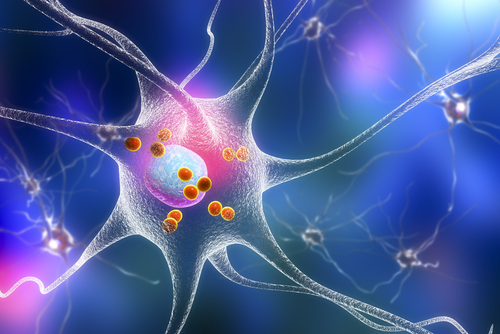Animal Study Examines Familial ALS Mutations, Disruptions in the ANXA11 Gene

Mutations in the annexin A11 gene (ANXA11), seen in familial amyotrophic lateral sclerosis (ALS) and frontotemporal dementia, disrupt the transport of key RNA molecules inside neurons, recent research shows.
The annexin A11 protein is a molecular adaptor required for RNA molecules, essential for neurons’ function, to hitchhike on lysosomes (cells’ degrading centers) to travel long-distances to other parts of the cell.
The study, “RNA granules hitchhike on lysosomes for long-distance transport, using annexin A11 as a molecular tether,” was published in the journal Cell.
Neurons’ function relies on the production of proteins at the right locations, including in its dendrites and axons. Dendrites are used by neurons to receive information from other cells, while the long axons are the way the cells transmit information.
Messenger RNAs are the molecules that contain the instructions to make proteins. This means that, in neurons, these molecules need to travel long distances — from the cells’ nucleus to the tip of an axon, for example.
Failure to distribute the RNA molecules correctly means key proteins are not produced where they’re needed, and this is particularly troublesome for large neurons.
Discuss the latest research in the ALS News Today forums!
RNA molecules travel within cells by clustering with other proteins forming “granules,” that are more easily shuffled around that individual RNA strands. But the exact molecular mechanisms underlying the transport of the RNA molecules remained largely unknown.
Researchers at Howard Hughes Medical Institute’s Janelia Reseach Campus in Virginia found that RNA granules hitchhike on lysosomes, the cells’ recycling centers. For this, they need a protein, called annexin A11 (ANXA11) that works as a molecular tether linking the RNA granules to the lysosome.
Lysosomes are not static, but instead shuffle around cells, making them an ideal vehicle to transport the RNA granules. Moreover, after the RNA has been deposited at its correct location, lysosomes can perform their duty and clean up the area.
The gene coding for ANXA11 is often mutated in people with familial ALS and frontotemporal dementia. The mutations interfere with ANXA11’s ability to work as a molecular tether between RNA granules and lysosomes.
Researchers used primary rat neurons and an animal model, called zebrafish, and saw that ANXA11 was found as the adaptor proteins linking RNA granules and lysosomes during the transport of RNA through neurons’ axons. Moreover, ALS-associated ANXA11 mutations disrupted RNA granules hitchhiking on lysosomes.
“Amyotrophic lateral sclerosis (ALS)-associated mutations in ANXA11 impair RNA granule transport by disrupting their interactions with lysosomes,” researchers wrote.
Overall, “our study identifies a previously unrecognized relationship between lysosomal biology and RNA metabolism, and implicates dysfunctional RNA granule trafficking as a potential converging disease mechanism in ALS,” the study concluded.
The next steps for researchers include investigating additional proteins that may work as molecular tethers, and further assessing how RNA granules form and disassemble.






